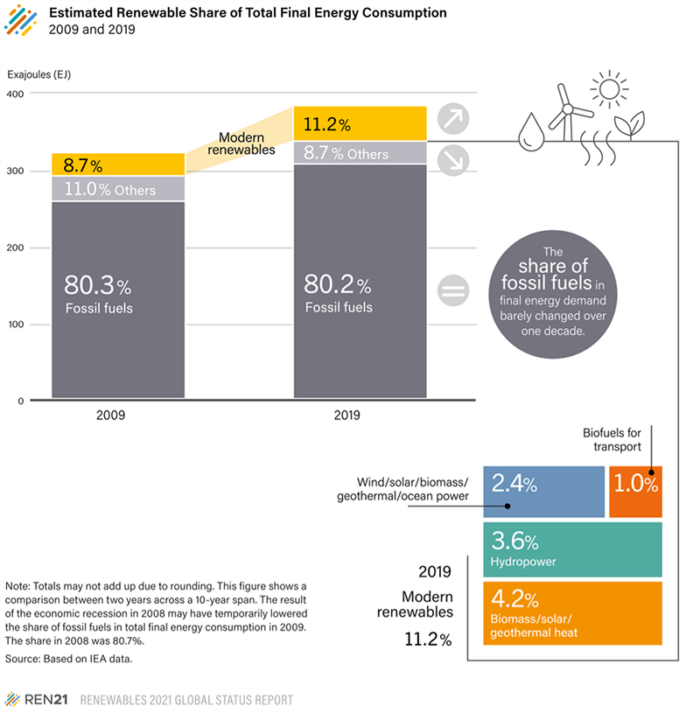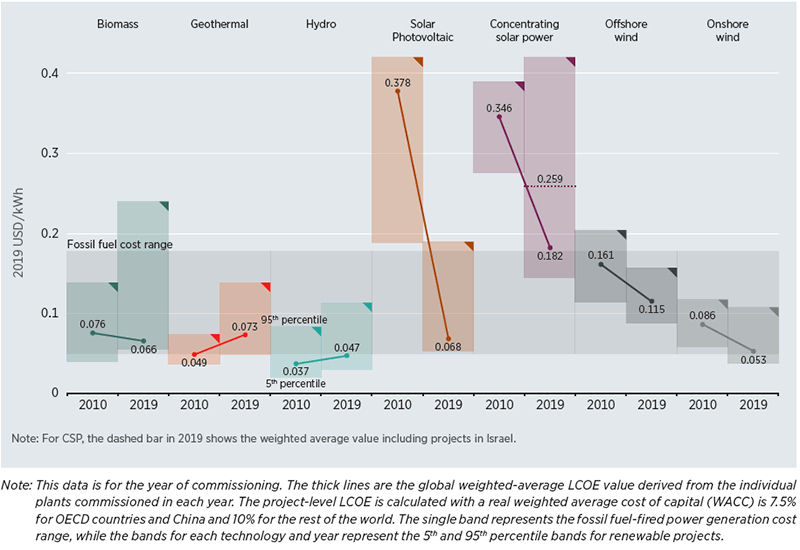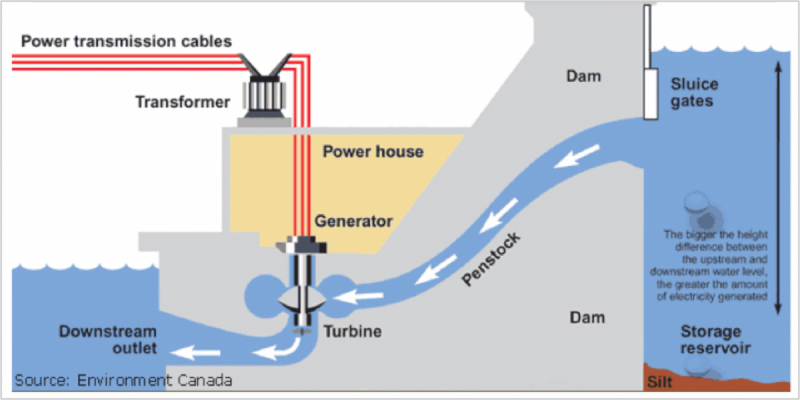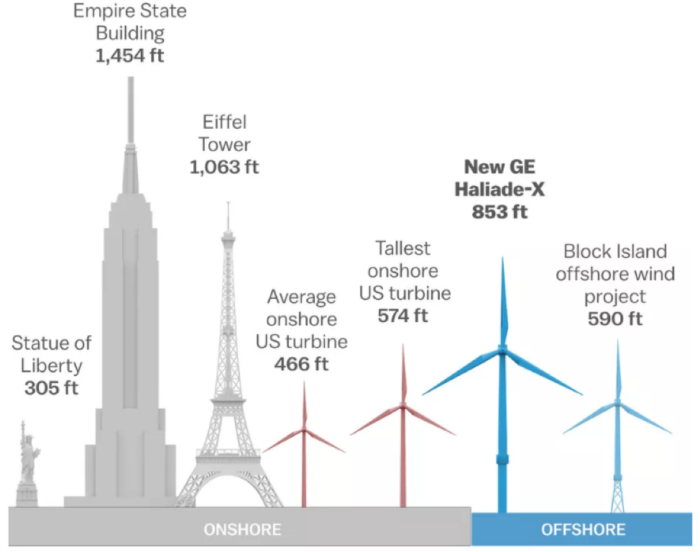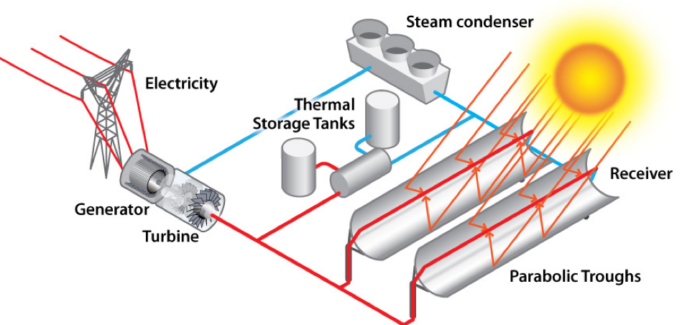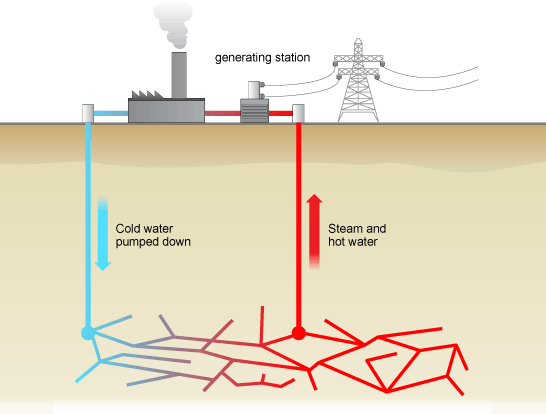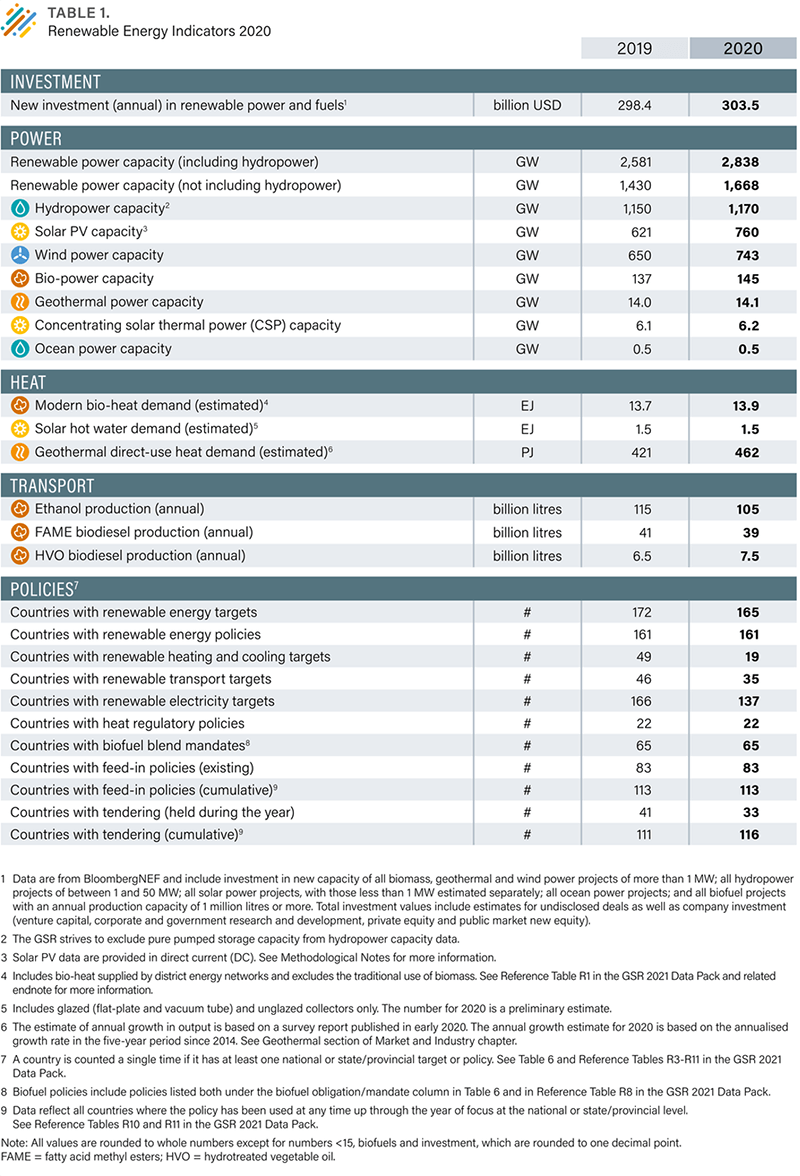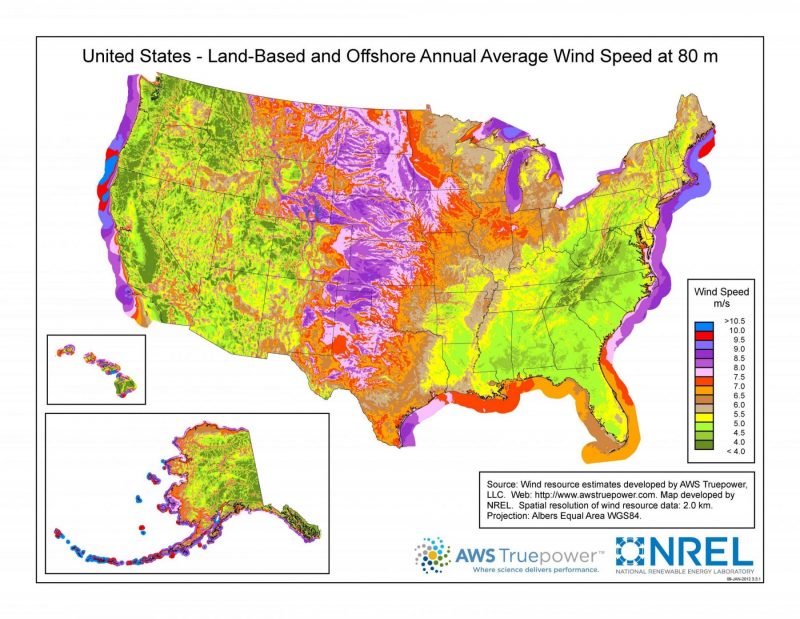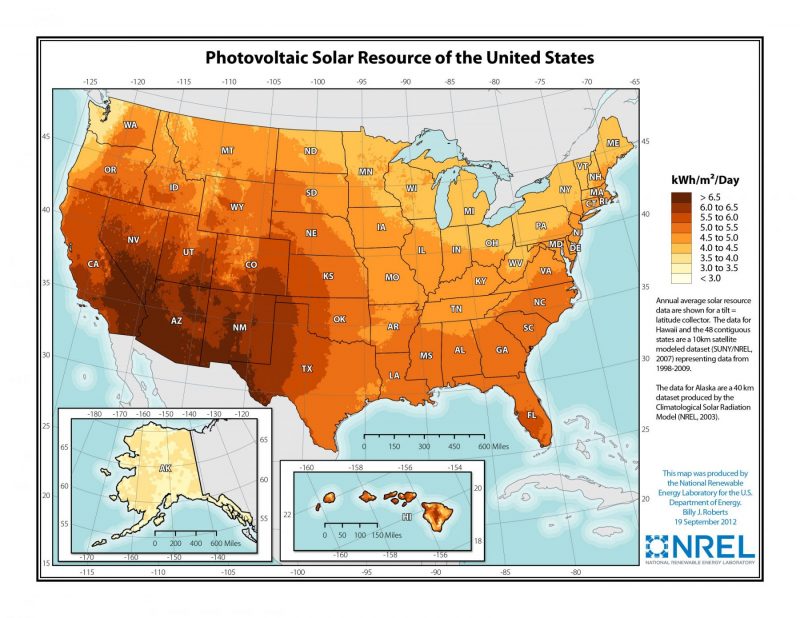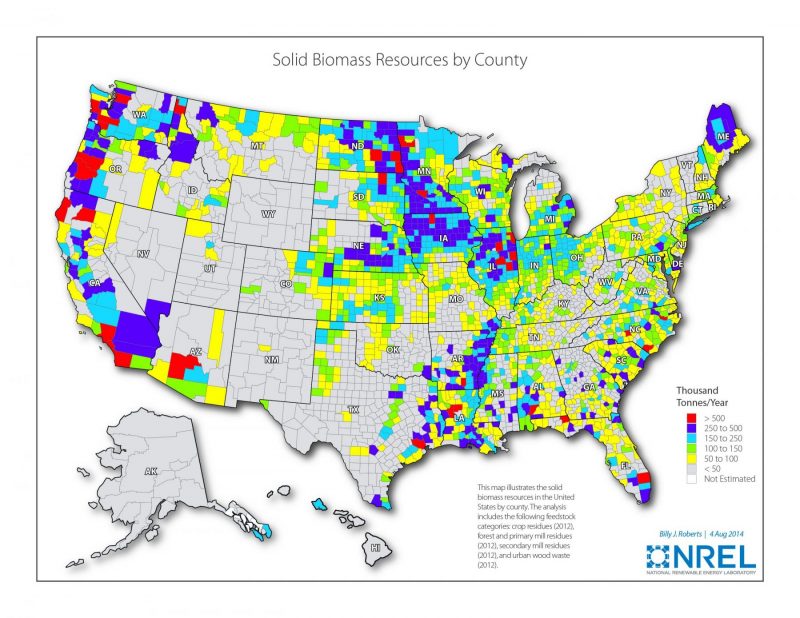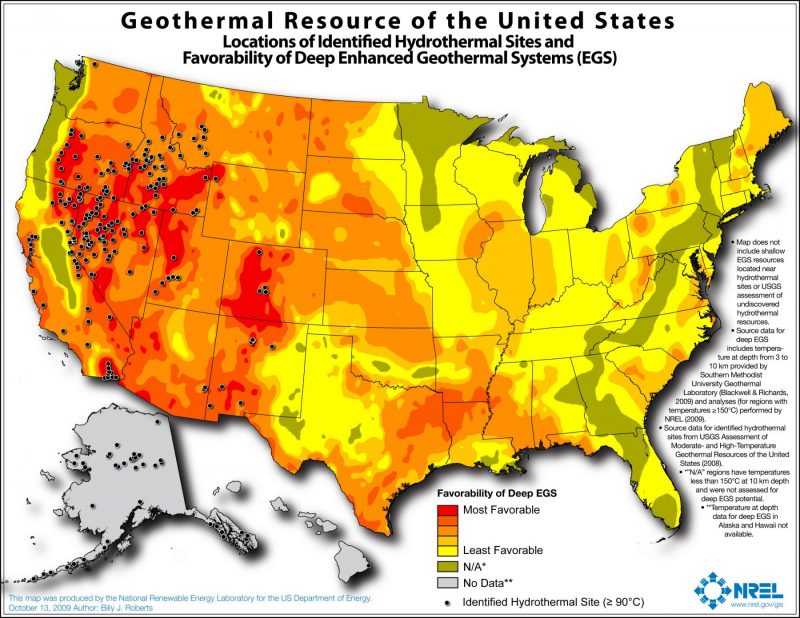Policy Drivers
Two federal tax credits have encouraged renewable energy in the United States:
- The production tax credit (PTC), first enacted in 1992 and subsequently amended, was a corporate tax credit available to a wide range of renewable technologies including wind, landfill gas, geothermal, and small hydroelectric. For eligible technologies, the utility received a 2.2 ¢/kWh ($22/MWh) credit for all electricity generated during the first 10 years of operation. The PTC is currently being phased out; at the end of December 2020, the PTC was extended for another year at 60 percent of the full credit amount, and facilities beginning construction after December 31, 2021 will no longer be able to claim this credit.
- The investment tax credit (ITC) is earned when qualifying equipment, including solar hot water, photovoltaics, and small wind turbines, are placed into service. The credit reduces installation costs and shortens the payback time of these technologies. The Consolidated Appropriations Act (2016) extended the ITC for three years, but Congress then passed a two year delay in 2020. It will phase down to 10 percent in 2024 (from 26 percent in 2021).
States offer added incentives, making renewables even easier to implement from a cost perspective.
A renewable portfolio standard requires electric utilities to deliver a certain amount of electricity from renewable or alternative energy sources by a given date. State standards range from modest to ambitious, and qualifying energy sources vary. Some states also include “carve-outs” (requirements that a certain percentage of the portfolio be generated from a specific energy source, such as solar power) or other incentives to encourage the development of particular resources. Although climate change may not be the prime motivation behind these standards, they can deliver significant greenhouse gas reductions and other benefits, including job creation, energy security, and cleaner air. Most states allow utilities to comply with the renewable portfolio standard through tradeable credits that utilities can sell for additional revenue.
In states with a renewable portfolio standard, utilities consider cost, intermittency and resource availability in choosing technologies that satisfy this requirement.
In the U.S. transportation sector, The Energy Policy Act of 2005 created a Renewable Fuel Standard that required 2.78 percent of gasoline consumed in the United States in 2006 to be renewable fuel.
The Energy Independence and Security Act of 2007 created a new Renewable Fuel Standard, which increased the required volumes of to 36 billion gallons by 2022, or about 7 percent of expected annual gasoline and diesel consumption above a business-as-usual scenario.
Types of Renewable Energy
Renewable energy comes from sources that can be regenerated or naturally replenished. The main sources are:
- Water (hydropower and hydrokinetic)
- Wind
- Solar (power and hot water)
- Biomass (biofuel and biopower)
- Geothermal (power and heating)
All sources of renewable energy are used to generate electric power. In addition, geothermal steam is used directly for heating and cooking. Biomass and solar sources are also used for space and water heating. Ethanol and biodiesel (and to a lesser extent, gaseous biomethane) are used for transportation.
Renewable energy sources are considered to be zero (wind, solar, and water), low (geothermal) or neutral (biomass) with regard to greenhouse gas emissions during their operation. A neutral source has emissions that are balanced by the amount of carbon dioxide absorbed during the growing process. However, each source’s overall environmental impact depends on its overall lifecycle emissions, including manufacturing of equipment and materials, installation as well as land-use impacts.
Water
Large conventional hydropower projects currently provide the majority of renewable electric power generation worldwide. With about 1,170 gigawatts (GW) of global capacity, hydropower produced an estimated 4,370 terawatt hours (TWh) of the roughly 26,000 TWh total global electricity in 2020.
The United States is the fourth-largest producer of hydropower after China, Brazil, and Canada. In 2011, a much wetter than average year in the U.S. Northwest, the United States generated 7.9 percent of its total electricity from hydropower. The Department of Energy has found that the untapped generation potential at existing U.S. dams designed for purposes other than power production (i.e., water supply, flood control, and inland navigation) represents 12 GW, roughly 15 percent of current hydropower capacity.
Hydropower operational costs are relatively low, and hydropower generates little to no greenhouse gas emissions. The main environmental impact is that a dam to create a reservoir or divert water to a hydropower plant changes the ecosystem and physical characteristic of the river.
Waterpower captures the energy of flowing water in rivers, streams, and waves to generate electricity. Conventional hydropower plants can be built in rivers with no water storage (known as “run-of-the-river” units) or in conjunction with reservoirs that store water, which can be used on an as-needed basis. As water travels downstream, it is channeled down through a pipe or other intake structure in a dam (penstock). The flowing water turns the blades of a turbine, generating electricity in the powerhouse, located at the base of the dam.
Other Hydroelectric Power Generation
Small hydropower projects, generally less than 10 megawatts (MW), and micro-hydropower (less than 1 MW) are less costly to develop and have a lower environmental impact than large conventional hydropower projects. In 2019, the total amount of small hydro installed worldwide was 78 GW. China had the largest share at 54 percent. China, Italy, Japan, Norway and the United States are the top five small hydro countries by installed capacity. Many countries have renewable energy targets that include the development of small hydro projects.
Hydrokinetic electric power, including wave and tidal power, is a form of unconventional hydropower that captures energy from waves or currents and does not require dam construction. These technologies are in various stages of research, development, and deployment. In 2011, a 254 MW tidal power plant in South Korea began operation, doubling the global capacity to 527 MW. By the end of 2018, global capacity was about 532 MW.
Low-head hydro is a commercially available source of hydrokinetic electric power that has been used in farming areas for more than 100 years. Generally, the capacity of these devices is small, ranging from 1kW to 250kW.
Pumped storage hydropower plants use inexpensive electricity (typically overnight during periods of low demand) to pump water from a lower-lying storage reservoir to a storage reservoir located above the power house for later use during periods of peak electricity demand. Although economically viable, this strategy is not considered renewable since it uses more electricity than it generates.

